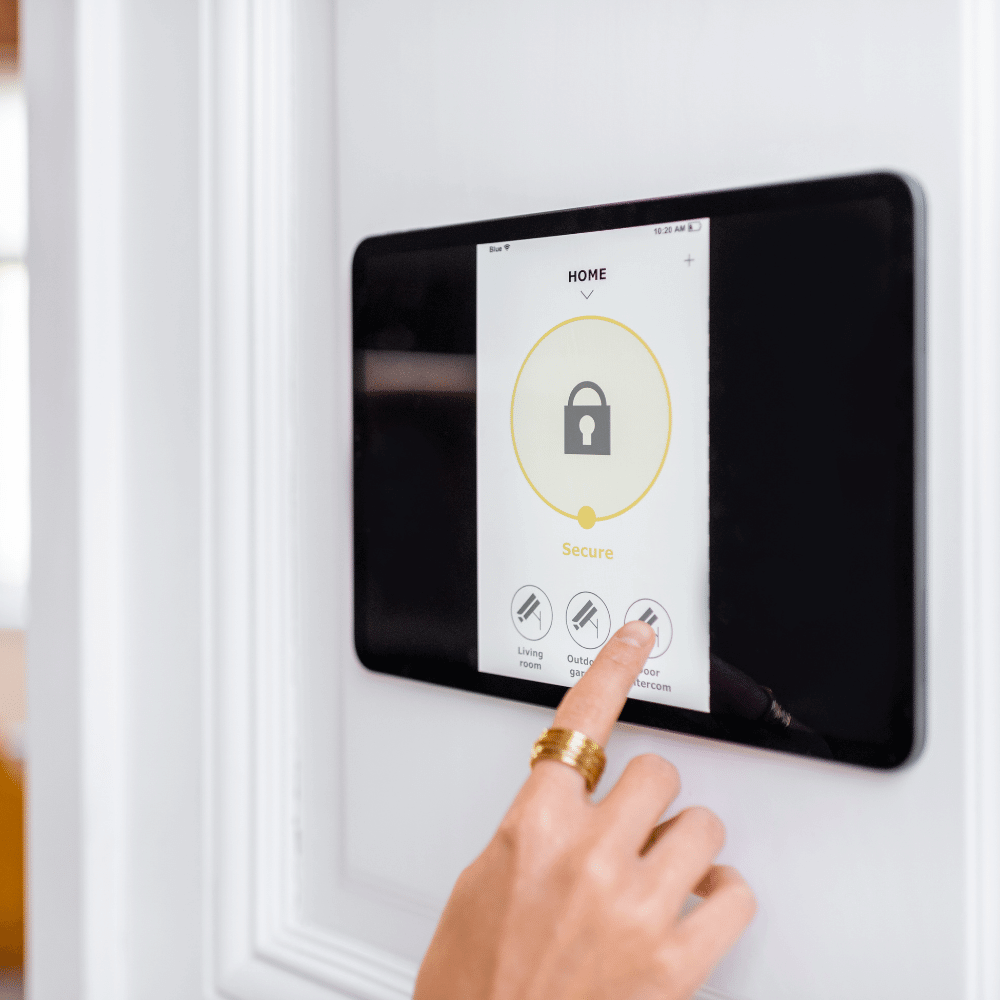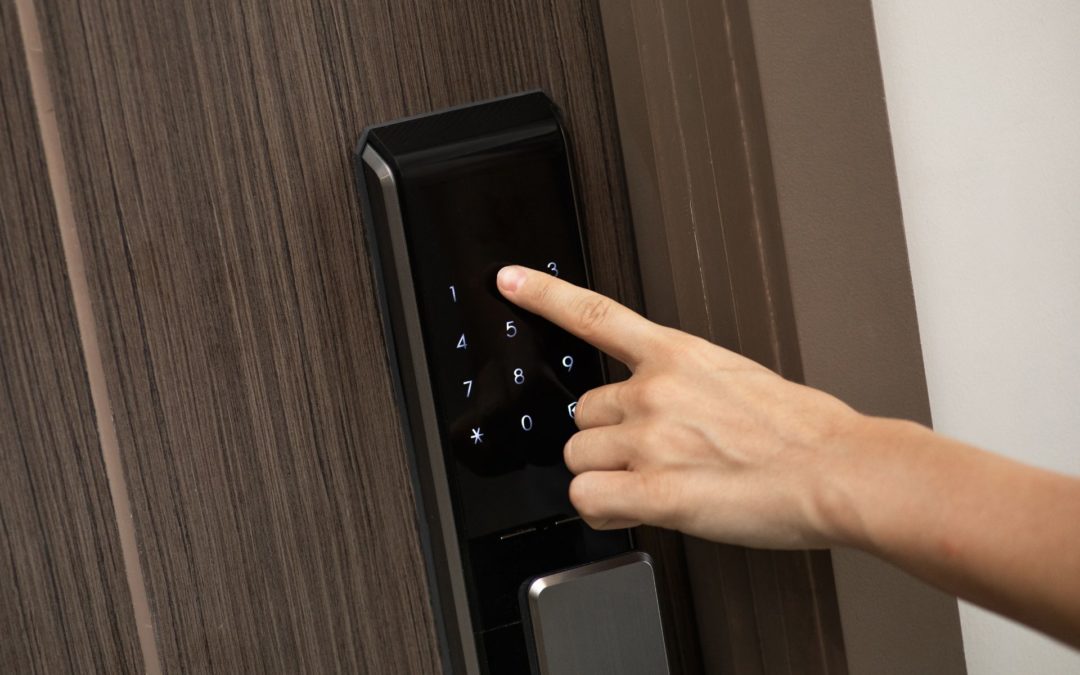Biometric Lock Systems for Homes: Enhancing Home Security with Cutting-Edge Technology
Enhancing home security has become a top priority for homeowners, especially as instances of break-ins and thefts continue to rise. In response to this growing demand for advanced security measures, biometric lock systems have emerged as a cutting-edge technology that offers homeowners a reliable and convenient solution. These innovative lock systems utilize unique physical attributes, such as fingerprints or facial recognition, to grant access to individuals and effectively safeguard homes.
Key Benefits of Biometric Lock Systems: Unparalleled Security and Convenience
One of the key benefits of biometric lock systems is their unparalleled level of security. Unlike traditional lock systems that can be easily manipulated or bypassed, biometric locks rely on individual traits that are virtually impossible to duplicate. This means that unauthorized access is significantly minimized, providing homeowners with peace of mind knowing that their homes are well-protected. Additionally, the advanced algorithms used in these systems ensure accurate recognition, reducing the risk of false positives or false negatives.
In addition to their enhanced security features, biometric lock systems also offer unparalleled convenience. Gone are the days of fumbling for keys or memorizing complex passwords. With biometric locks, homeowners can effortlessly gain access to their homes with a simple touch or scan. This eliminates the need for multiple keys and streamlines the entry process, making it faster and more convenient for all family members. Furthermore, these lock systems can be easily integrated with other smart home devices, enabling seamless control and management through a central hub or smartphone app.
Overall Outlook and Accessibility of Biometric Lock Systems
Overall, biometric lock systems present a promising solution for homeowners seeking to enhance their home security. With their advanced technology, unbeatable security, and convenience, these lock systems offer a superior level of protection for homes. As this technology continues to evolve, it is expected that biometric lock systems will become more accessible and affordable, making them a viable option for homeowners looking to invest in the latest advancements in home security.
How Biometric Lock Systems Work: Understanding the Science behind Secure Access
Biometric lock systems are revolutionizing home security by providing secure access through cutting-edge technology. But how exactly do these systems work? Let’s dive into the science behind this innovative technology.
At the core of biometric lock systems is the use of unique physiological or behavioral traits of individuals to grant access. Fingerprint recognition is one of the most common methods employed in these systems. Each person has a unique pattern of ridges and valleys on their fingertips, which are captured by a reader. The reader then analyzes the captured image, extracting key features and converting them into code. This code is stored in a secure database and compared with the fingerprint presented during subsequent attempts to gain access. If there is a match, the system grants entry.
Another type of biometric technology used in lock systems is facial recognition. Using advanced algorithms, the system captures and analyzes a person’s facial features, such as the distance between the eyes, the shape of the nose, and the contour of the face. This information is then compared with the stored data to authenticate the individual. By utilizing unique characteristics, biometric lock systems provide a highly secure means of access control, ensuring that only authorized individuals are granted entry.
With an understanding of the science behind biometric lock systems, it becomes evident that these sophisticated technologies offer enhanced security for homes. By leveraging the uniqueness of our own biological or behavioral traits, these systems provide a robust layer of protection against unauthorized access. From fingerprint recognition to facial analysis, biometric lock systems are paving the way for a safer and more secure future.
The Benefits of Biometric Lock Systems: Why Upgrade to a Fingerprint-Enabled Security System
In today’s fast-paced world, home security is a top concern for homeowners. Traditional lock-and-key systems are no longer enough to keep our homes safe from burglaries and unauthorized access. This is where biometric lock systems come in, offering a cutting-edge solution that enhances home security like never before.
One of the greatest benefits of biometric lock systems is the integration of fingerprint recognition technology. By upgrading to a fingerprint-enabled security system, homeowners can enjoy a whole new level of convenience and peace of mind. No more worrying about lost or stolen keys, or struggling to remember complex access codes. With a simple touch of your finger, you can effortlessly unlock your home and ensure that only authorized individuals can gain entry. This not only adds an extra layer of security but also saves you time and eliminates the hassle of carrying keys or memorizing codes. With a fingerprint-enabled security system, you can have confidence in knowing that your home is protected by the most advanced technology available.
Choosing the Right Biometric Lock System for Your Home: Factors to Consider
When choosing a biometric lock system for your home, there are several factors that you need to consider. One of the most important factors is the level of security that the system provides. You want to make sure that the system is highly accurate and reliable, as any errors or glitches could compromise the security of your home. Look for a system that has a high-resolution sensor and advanced algorithms to ensure accurate identification.
Another factor to consider is the convenience of the system. Biometric lock systems come in a variety of forms, including fingerprint scanners, iris scanners, and facial recognition systems. You’ll need to think about which type of system would be most convenient for you and your family. For example, if you have young children or elderly family members, a system that requires a simple fingerprint scan may be easier for everyone to use. Additionally, consider if the system offers features like remote access or integration with other smart home devices, as these can add convenience to your daily life.
Installation Made Easy: Step-by-Step Guide to Setting Up Your Biometric Lock System
Setting up a biometric lock system for your home can seem like a daunting task, but with the right guidance, it can be a breeze. Here is a step-by-step guide to help you through the installation process.
First, ensure that you have chosen an optimal location for your biometric lock system. It should be placed on a sturdy surface near your main entry point. Make sure to read the manufacturer’s instructions carefully to determine the exact placement requirements.
Next, gather all the necessary tools and components. This may include a power drill, screws, a screwdriver, and any additional accessories provided with the lock system. It is crucial to have these ready before you begin the installation process.
Once you have everything in place, it’s time to install the lock system. Follow the step-by-step instructions provided by the manufacturer. Generally, this involves drilling holes for the screws and attaching the lock system to the door or door frame. Make sure to double-check the alignment and secure all screws tightly.
After the physical installation, it’s time to program the system. This typically involves registering user fingerprints or other biometric data. Follow the instructions provided by the manufacturer carefully to ensure accurate registration and optimal functionality.
Once the programming is complete, test the lock system to make sure it is functioning correctly. Lock and unlock the door using the registered fingerprints or biometric data, and check if any adjustments or troubleshooting is required.
The installation process for a biometric lock system can be made easy with proper preparation and attention to detail. By following this step-by-step guide, you can successfully set up a biometric lock system for your home and enhance your overall security.
Ensuring Optimal Performance: Regular Maintenance and Troubleshooting Tips
Regular maintenance and troubleshooting are crucial for ensuring the optimal performance of your biometric lock system. By following a few simple steps, you can keep your system functioning smoothly and address any potential issues that may arise.
Firstly, it is important to regularly clean your biometric lock system to prevent any dust or debris from interfering with its operation. Use a soft, lint-free cloth to gently wipe the fingerprint sensor and any other visible surfaces. Avoid using harsh chemicals or cleaning agents that could damage the system.
In addition to cleaning, you should also regularly inspect the system for any signs of wear or damage. Check for loose connections, frayed cables, or any physical damage that could affect the performance of your biometric lock system. If you notice any issues, it is best to contact a professional technician for repairs or replacement parts.
It is also advisable to keep your biometric lock system’s software up to date by installing any available updates from the manufacturer. These updates often include bug fixes, security enhancements, and new features that can improve the overall performance and functionality of your system.
Lastly, familiarize yourself with some troubleshooting tips in case you encounter any issues with your biometric lock system. For example, if the fingerprint sensor is not responding, try cleaning it again or re-registering your fingerprints. If the system is not recognizing your fingerprint or providing inconsistent results, consider repositioning your finger or adjusting the sensitivity settings.
By following these regular maintenance and troubleshooting tips, you can ensure that your biometric lock system operates at its best and provides reliable security for your home.
Customizing Your Security: Additional Features and Options for Biometric Lock Systems
When it comes to customizing your home security, biometric lock systems offer a range of additional features and options that can enhance the overall level of protection. One such feature is the ability to program multiple fingerprints into the system. This means that not only can you and your family members have access to your home, but you can also grant temporary access to trusted friends or housekeepers when needed. This feature provides flexibility and convenience without compromising on security.
In addition to fingerprint recognition, some biometric lock systems also offer alternative methods of access. For example, some systems allow for key cards or PIN codes to be used in conjunction with fingerprint recognition. This gives you the option to choose which method is most convenient for you and your family. Furthermore, some systems are equipped with a voice recognition feature, adding an extra layer of security to your home. By customizing your biometric lock system to suit your specific needs, you are ensuring that your home security is tailored to your preferences.
Integrating Biometric Lock Systems with Existing Home Security Systems
Integrating biometric lock systems with existing home security systems offers homeowners an enhanced level of protection and convenience. By combining the advanced technology of biometrics with the robust features of traditional security systems, homeowners can create a comprehensive and seamless security solution for their homes.
One of the key benefits of integrating biometric lock systems with existing home security systems is the ability to centralize and streamline access control. With biometric lock systems, homeowners can program fingerprint, iris, or facial recognition as the primary method of entry, reducing reliance on keys or codes that can be lost or compromised. By integrating this technology with existing security systems, homeowners can conveniently manage access permissions and monitor entry logs through a single platform, enhancing security and simplifying operations.
In addition, integrating biometric lock systems with existing security systems allows for more accurate and reliable monitoring. Biometric data provides indisputable identification, eliminating the risk of unauthorized access. This integration also allows for real-time alerts and notifications to be sent to homeowners’ smartphones or other devices, providing peace of mind and immediate action in case of any security breaches. Whether it’s checking who entered the home while they were away or granting temporary access to guests or service providers, homeowners can have full control and visibility over their home’s security at all times.
Integrating biometric lock systems with existing home security systems offers a range of benefits, from enhanced convenience and access control to improved monitoring and peace of mind. By harnessing the power of biometric technology and leveraging it alongside traditional security systems, homeowners can create a robust and comprehensive security solution tailored to their specific needs. With the advancement of technology, it is becoming increasingly important to consider integrating biometric lock systems to stay ahead of potential security risks and protect what matters most – our homes and loved ones.
Addressing Concerns: Privacy and Security Issues Surrounding Biometric Lock Systems
Privacy and security concerns are natural when it comes to adopting any new technology, and biometric lock systems are no exception. One of the main worries that often arise is whether the biometric data collected by these systems can be compromised or misused. However, it is important to note that reputable biometric lock systems use highly advanced encryption techniques to store and protect the biometric data of users. This means that even if someone were to gain access to the stored data, it would be extremely difficult for them to decode or replicate the biometric information.
Another concern revolves around the possibility of false positives or false negatives in biometric recognition. While it is true that no system is perfect, biometric lock systems have come a long way in terms of accuracy and reliability. Manufacturers invest significant resources in research and development to continuously improve the algorithms used to match fingerprints or other biometric markers. However, it is worth considering that factors like changes in physical characteristics (such as scars or aging) and environmental conditions (such as dirt or moisture) can occasionally impact the system’s ability to authenticate users accurately. Nonetheless, regular maintenance and proper cleaning can significantly minimize these potential issues.

Future Innovations: What the Next Generation of Biometric Lock Systems Holds
Biometric lock systems have revolutionized home security, offering a reliable and convenient way to protect our homes. As technology continues to advance, it is exciting to think about what the future holds for these innovative security systems. The next generation of biometric lock systems is poised to take home security to the next level with a range of exciting features.
One of the key future innovations in biometric lock systems is the integration of artificial intelligence (AI). Imagine a lock system that not only recognizes your fingerprints or facial features but also learns and adapts to your specific patterns and behaviors. With AI-powered biometric lock systems, your home security will become smarter and more intuitive, providing a personalized level of protection that is tailored to your needs.
Another area that holds great potential for future biometric lock systems is the incorporation of multi-modal authentication. Currently, most biometric lock systems rely on a single mode of authentication, such as fingerprints or facial recognition. However, the next generation of systems is expected to combine multiple modalities, such as fingerprint and iris scanning, for even stronger security. This multi-modal approach will make it significantly more difficult for unauthorized individuals to gain access to your home, enhancing the overall security of your residence.
With these exciting future innovations on the horizon, it is evident that biometric lock systems will continue to evolve and play a crucial role in enhancing home security. As technology progresses, homeowners can look forward to a new level of personalized and robust protection for their properties. Whether it’s through the integration of AI or the implementation of multi-modal authentication, the future of biometric lock systems is bright and promising. If you want to see what the future has in store, be sure to rely on Spider Locksmith. We are just the team you could want for all your locksmith needs.

